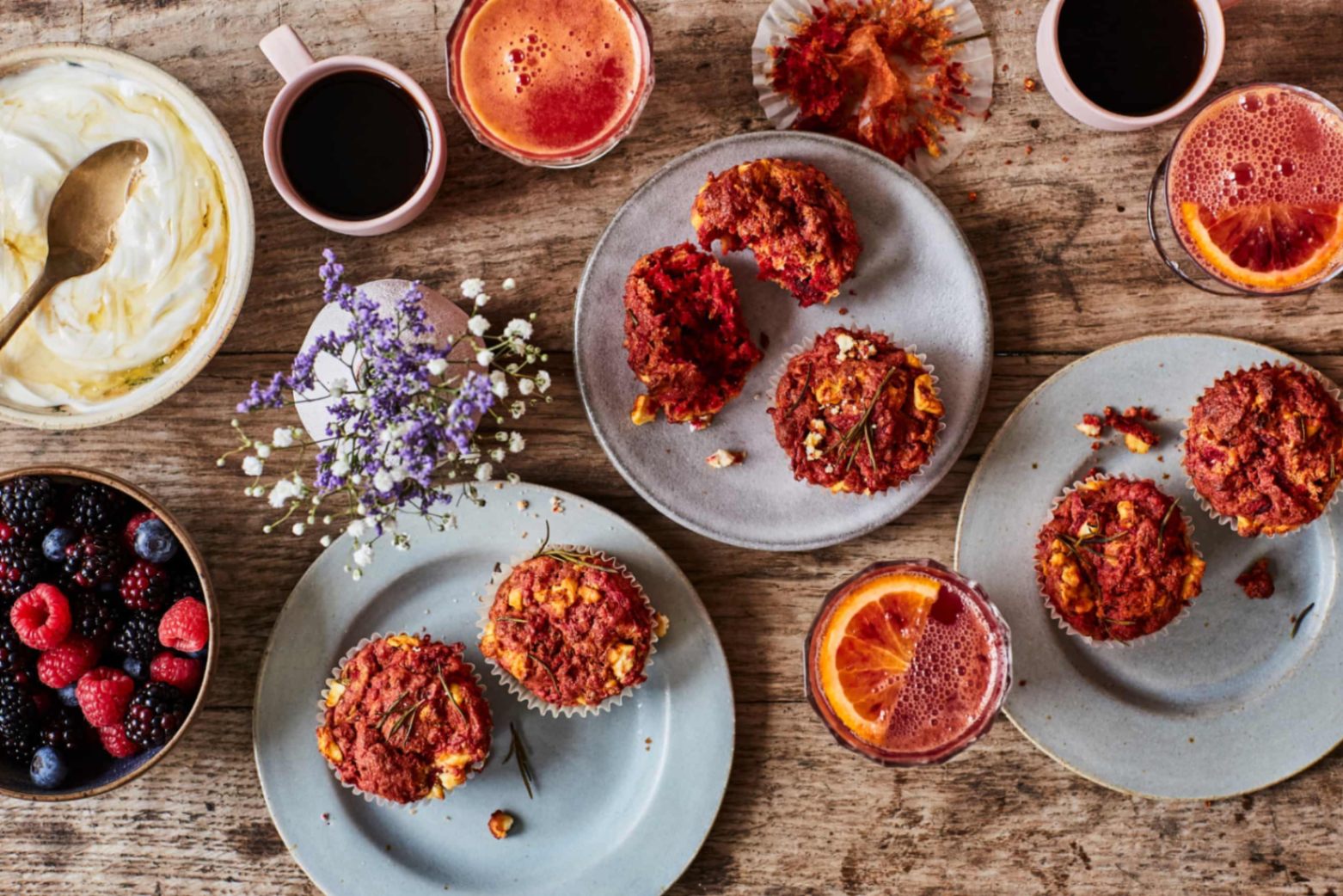Brands are moving from fast to ‘forever fashion’ – but are new clothes ever sustainable?
fashion has a new trend for spring. Well, of course it does – that’s how fashion works. Except this time round, the trend isn’t crimson or corduroy, or Peter Pan collars or platform shoes. The hot look for spring 2022 is the “forever wardrobe”. The key pieces of the season are clothes that come with the promise that they will never go out of style: think crisp white shirts and well-cut blazers; classic knitwear and timeless little black dresses. Throwaway fashion is so last season. This spring, chic comes with a lifetime guarantee.The irony is that the forever wardrobe never went away, it just went out of style. The fast fashion industry, which exploded in the last 30 years, turbocharged the trend cycle, abandoning the principles of enduring elegance in favour of a rollercoaster of plot twists (woah, jumpsuits!), comebacks (Crocs) and about-turns (black is back, again) designed to keep an audience hooked. Bored of your jeans? Why not try leather trousers! Throw out your neutrals, it’s the season for neon!
‘My son cowers when a shopkeeper says hello’ – are the toddlers of Covid all right?
Until the spring of 2020, Rebecca Handford’s then two-year-old daughter Eadie was happily spending three days a week being looked after by her grandparents, enjoying trips out, and going to cafes.But then came the first lockdown, and her world closed in overnight. The family, who live in a small village on the border between Cheshire and Derbyshire, felt lucky to have a garden for Eadie to play in – although, as Handford ruefully puts it, while she was trying to work from home “Mr Tumble did a lot of the heavy lifting”.Eadie is an only child, and her language came on in leaps and bounds due to spending so much time with her parents. But Handford worries that she missed out on learning to socialise. “If there’s a little gang of toddlers running around, she very much doesn’t want to take part. Even if we go to the park, if there’s another child on the slide she will go and play somewhere else until it’s free.”
How we met: ‘I wanted to discover the world. He said: I’ll go with you!’
It wasn’t the first time the two men had seen each other. Sebastien, who had been working in financial services in London since 2006, had spotted Stefan on a night out two years earlier. “I was so shy and just coming out at the time, so I didn’t speak to him,” he says. “I remembered him instantly, though, and told the friend I was with that he was ‘the man of my life’.” Sebastien still felt too shy to approach Stefan, so he was delighted when his friend passed on the phone number. “My cheeks flushed and I was so excited,” he says. “I sent him a text the next day. It took me ages to write because I didn’t want to mess it up.”
Rukmini Iyer’s recipe for beetroot, feta and rosemary breakfast muffins
I love so many things about these muffins: the vibrantly pink batter, and then the perfectly balanced hit of feta alongside the beetroot and rosemary in the final bake.These are as perfect for a lazy Valentine’s Day brunch with friends as they are for breakfast in bed à deux – especially when served with blood orange mimosas on the side. I’ve been known to eat three in one sitting, so double up if you’re having more than four people over.Everything can be found fresh from Ocado, or in its well-stocked baking “aisle”.Preheat the oven to 200C (180C fan)/400F/gas 6. In a large bowl, stir the grated beetroot with the lemon juice, then add the flours, baking powder, sea salt, and chopped rosemary. Mix well.In a separate bowl or large jug, whisk the olive oil, yoghurt, milk and egg together. Stir the liquid very briefly into the beetroot and flour mixture along with half the crumbled feta. Combine just until you can’t see any flour, and no further. The less you mix, the lighter the muffin.Spoon a tablespoon of muffin mixture into each of your 12 lined muffin cups, then scatter over the remaining feta evenly, along with a few rosemary sprigs and a small grind of black pepper.Transfer the muffins to the oven to bake for 30-35 minutes, until well risen and firm to the touch. Allow to cool slightly on a wire rack, but make sure to serve warm. These are best eaten on the day they’re made, but can be kept in the fridge in an airtight box for up to two days and reheated gently in the oven as needed.
Louis Theroux: ‘I’ve always found anxiety in the most unlikely places’
I always felt like the second fiddle to my older brother Marcel, who I thought was impossibly brilliant and mature and seemed to be reading more or less from the womb, although I’m two years younger, so I wouldn’t have known that first-hand. I was the sideshow: the funny one, the ridiculous one my grandparents said was “good with my hands”, which at five or six I embraced. It was only as I got older I realised it meant, “might not want to stay in school past 14 or 15”.From childhood I’ve always found anxiety in the most unlikely places. Aged six I remember watching maypole dancers skipping around and braiding these ribbons into beautiful patterns at my south London primary school and even though I was still in the infants and wouldn’t be doing it for years, I thought, “I’m never going to be able to fucking dance around a maypole.” All through my life I’ve tended to experience future events in a negative way. It’s always been a source of looming discomfiture.I always felt like the second fiddle to my older brother Marcel, who I thought was impossibly brilliant and mature and seemed to be reading more or less from the womb, although I’m two years younger, so I wouldn’t have known that first-hand. I was the sideshow: the funny one, the ridiculous one my grandparents said was “good with my hands”, which at five or six I embraced. It was only as I got older I realised it meant, “might not want to stay in school past 14 or 15”.From childhood I’ve always found anxiety in the most unlikely places. Aged six I remember watching maypole dancers skipping around and braiding these ribbons into beautiful patterns at my south London primary school and even though I was still in the infants and wouldn’t be doing it for years, I thought, “I’m never going to be able to fucking dance around a maypole.” All through my life I’ve tended to experience future events in a negative way. It’s always been a source of looming discomfiture.
‘I’ve had some hairy experiences’: actor Adeel Akhtar on racism, role models and feeling hopeful
Akhtar has made a successful career out of channelling and elevating the circumstances of underrepresented people, and of capturing the grace and power in everyday actions, even when those actions are questionable. When I ask him about being normal, he says plainly, “Well, I am that.” This is partly because of how he looks: the hangdog face, the dark eyes, a twinkly smile. But also because he understands that even in the smallest lives there are things at stake – a truth he holds dear. “There’s something that makes me realise that we need to see the world we’re living in as full and beautiful,” he says. In 2017, he became the first non-white man to win a Lead Actor Bafta, for his role in Murdered By My Father, a TV drama about arranged marriage in which he is by turns tender and maniacal. (He had already been Bafta-nominated for Utopia, the Dennis Kelly drama.) He’s since appeared in a string of A-list films and television series: as a compromised doctor in Sweet Tooth, the Netflix series; as brother to Kumail Nanjiani in The Big Sick; as a kindly neighbour in Back to Life, the Daisy Haggard comedy. It is likely you recognise him even if you aren’t part of the subset that already considers him a household name. When Haggard first approached him, she assumed he would be too busy to talk. “I ended up writing him a letter,” she told me. “I thought, well, it’s worth a shot.” When he said yes, she was amazed, and she began to jump up and down. On set, Akhtar would “do all these lovely things,” Haggard recalled, “and I’d think, ‘Oh, that’s gorgeous, I definitely didn’t write that.’”
Why it’s the right time to lift plan B restrictions in England
The numbers of admissions and deaths peaked below the level expected in even the best-case scenarios. Pressure on hospitals remained very high, but in most cases, the situation was better than feared. The editor of the Lancet, Richard Horton, this week described scientists’ response to Omicron as “a case study in error”. He attributed this to an “over-reliance on mathematical modelling and too little emphasis on the experience of health workers on the frontlines of care”, with insufficient attention paid to the views of South African doctors.“Following the science” in relation to restrictions was always a misnomer, as “the science” was often uncertain, leading to models that inevitably provided a very wide range of scenarios with different levels of restrictions. Many people are now understandably concerned about the potential negative impact of ending plan B restrictions. But again, it is important to look at what’s actually happened to see how effective these restrictions have been – and whether they’ve led to better outcomes.Child Covid infections are rising in England – is low vaccine rate a factor?Read morePlan B restrictions have effectively been in place in Wales and Scotland since July (in England, the government announced the move to plan B on 8 December). A comparison of death rates since 19 July from ONS data shows that England has actually had the lowest death rates. (It is not possible to directly compare case and hospitalisation rates due to differences in how they are measured, but these are both closely linked to death rates.)Many have long assumed that more and earlier restrictions lead to better outcomes than voluntary behaviour changes. This assumption is largely based on evidence from the pre-vaccination era, when the countries that locked down quickly against Covid experienced far fewer deaths and hospitalisations. But over the last few months, the real-world evidence no longer appears to support this assumption: now, the main determinant of hospitalisation and death rates is the level of immunity in a population, through both vaccination and natural infection. This is especially the case among older and higher-risk groups. This is why England – where 98% of over 15s have some immunity to Covid-19 – appears to have fared relatively well since July compared with other European countries, despite having fewer restrictions.AdvertisementBehaviour change and compliance to rules also play a role, of course. There is evidence that household mixing in England rose and fell along with perceptions of risk rather than necessarily because of the rules in place at the time. And we have now seen that it is voluntary behaviour changes over the last few weeks, such as reducing contacts, that has led to the same reduction in admissions and deaths that the models showed would be produced by a return to step 1 of the roadmap.At the other extreme, lockdown sceptics now say that because lockdowns and other non-pharmaceutical interventions such as social distancing are no longer needed, they were never needed – even though before the vaccine programme, Covid-19 overwhelmed the NHS and the health service was not able to provide all of its services.Even during this wave, the pressure on the NHS remains very high – particularly due to staff absence – and many of my colleagues on the frontline are physically and mentally exhausted. That is why it’s so important for everyone to continue to follow the public health guidance – including wearing masks – even after mandatory restrictions end.Medical and public health interventions are usually judged by the criteria: do they have a clinically significant benefit? Does that benefit outweigh any harms? And are they the best use of resources – or would spending money on something else produce greater benefits? Of course, during the first wave this evidence was lacking – which is why lockdown measures were justified. Even in the second wave, there was sufficient evidence to show that the benefits of lockdown outweighed the costs – especially with the arrival of vaccines, when lockdowns were not just delaying admissions and deaths but actually preventing them.
How ‘super-enzymes’ that eat plastics could curb our waste problem
Beaches littered with plastic bottles and wrappers. Marine turtles, their stomachs filled with fragments of plastic. Plastic fishing nets dumped at sea where they can throttle unsuspecting animals. And far out in the Pacific Ocean, an expanse of water more than twice the size of France littered with plastic waste weighing at least 79,000 tonnes.The plastic pollution problem is distressingly familiar, but many organisations are working to reduce it. Alongside familiar solutions such as recycling, a surprising ally has emerged: micro-organisms. A handful of microbes have evolved the ability to “eat” certain plastics, breaking them down into their component molecules. These tiny organisms could soon play a key role in reducing plastic waste and building a greener economy.The scale of the problemAs a species, we make an enormous amount of plastic. In 2020, the most recent year for which we have data, 367m tonnes were produced globally, according to trade association Plastics Europe. This represented a slight decline compared with 2019, when 368m tonnes were made, but that was probably because of the Covid-19 pandemic: production had previously increased almost every year since the 1950s. A 2017 study estimated that 8.3bn tonnes of plastic had been made in total.
Buy and sell one for daily use
Sugarcane is known as an important crop for people's daily life because it is ground to make water for sugar cane juice, but usually after grinding water to produce sugar. Sugarcane is left to rot by some countries in its natural state, in which even Cambodia has left this sugarcane. Seeing that sugarcane was left like this, an entrepreneur made sugarcane into a dish to use, there are endless buyers.
Millions in UK face fuel poverty despite Sunak support, say experts
Millions of UK households are expected to be dragged into fuel poverty for the first time despite the support announced by Rishi Sunak to soften the blow from soaring energy bills.Several charities warned that the chancellor his plan was badly targeted and offered too little support for those most in need. The scale of the shock to low-income households would drive hunger, rent arrears, and ill health, and pile extra demand on to already stretched food banks and homeless shelters, they said.How the UK energy price cap is calculated – and how it affects your billRead moreThe Resolution Foundation thinktank said cases of fuel stress – where energy bills in a household exceed 10% of disposable income – would double to 5 million in April despite the steps announced by Sunak on Thursday.The Treasury’s intervention was designed to ease the pressure of a £700 increase in the regulated energy price cap to nearly £2,000 a year.Without the chancellor’s plan – which offers most consumers £350 of relief on their bills – fuel stress would have trebled to more than 6 million, the thintank said. However, it criticised Sunak’s decision to favour a moderate amount of help for a large number of people, rather than deeper support for those most in need.“The government’s package of measures might cushion the blow for some but it’s not enough to protect people who already need a food bank,” said Garry Lemon, the policy director at the Trussell Trust food bank network. He called for the planned 3.1% rise in benefits from April to be doubled to 7%.
Russian figure skaters plot world domination
Jamaica will enter a four-man bobsleigh team in the Olympics for the first time in 24 years after nicking the final qualifying spot, offering a feelgood reboot for the island nation whose debut at the 1988 Calgary Games inspired the Disney film Cool Runnings. Just making it to Beijing might seem like accomplishment enough for Shanwayne Stephens, the team’s 31-year-old pilot and Royal Air Force lance corporal who emigrated to Great Britain with his family in 2002: certainly after improvised training methods at the height of the pandemic that included pushing his girlfriend’s Mini Cooper around the streets of Peterborough. But having touched down in China after undergoing their final preparations at the University of Bath, his goal is plain. “It’s got to be medalling,” Stephens says. “It’s everybody’s dream, it’s what we’re here to do. So why not aim high?” BAG
Eileen Gu becomes household name
Jamaica will enter a four-man bobsleigh team in the Olympics for the first time in 24 years after nicking the final qualifying spot, offering a feelgood reboot for the island nation whose debut at the 1988 Calgary Games inspired the Disney film Cool Runnings. Just making it to Beijing might seem like accomplishment enough for Shanwayne Stephens, the team’s 31-year-old pilot and Royal Air Force lance corporal who emigrated to Great Britain with his family in 2002: certainly after improvised training methods at the height of the pandemic that included pushing his girlfriend’s Mini Cooper around the streets of Peterborough. But having touched down in China after undergoing their final preparations at the University of Bath, his goal is plain. “It’s got to be medalling,” Stephens says. “It’s everybody’s dream, it’s what we’re here to do. So why not aim high?









